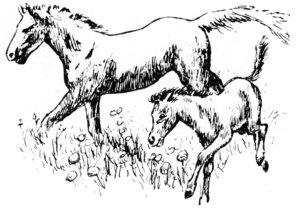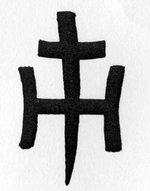Lipizzaners
The establishment of the stud farm in Hostau with its three external farmyards Zwirschen, Hassalitz and Taschlowitz has its origin in the results of the First World War, when studs in Savatka (Galicia) and Radautz (Bukowina) had to be evacuated because of the approaching enemy.
The yards of the Prince Karl of Trauttmansdorff-Weinsberg (1845-1921) were leased by the Austrian-Hungarian Agricultural Ministry and the horses were accommodated there after the troublesome journey. After 1916 all military studs were dissolved by the government at that time and the military stud of Hostau was converted into a regular stud farm. Three stallions were assigned to Hostau: an Arab half-breed, an English half-breed and a Hanoverian. The main stud with 200 mares and three stallions was placed at the farmyard in Zwirschen.
After the end of the war, the horses were transferred to Klattau, but as soon as normal conditions were gained again, the remaining horses returned back to Hostau. Some years later the leasehold became property of the Czechoslovakian state.
After 1918 the majority of the fields were converted into pastures. The area of 1200 acres was reduced to 250 acres for husbandry. The number of horses was 500 at this time. The stud farm increased. Some thoroughbred mares and thoroughbred and half-breed stallions were purchased abroad.
Among the horses born and raised in Hostau, and there were scores, could be seen on international horse exhibitions. Exclusively there were three horses doffed with the seal Hostau at the Olympic Games in Berlin in 1936. They achieved good results in competition with world-class horses of 35 nations. In late summer 1938 the whole stud farm was shifted to Horni Moteschice next to Trentschin in Slovakia, where since 1927 a sister stud had existed. By martial effects in the year 1945 the whole population of all breed horses in these two studs was lost up to small remnants.
After the invasion of the German troops in October 1938 the army administration took over the stud in Hostau, which was again at the beginning a military stud farm. The horses were purchased in East Prussia, Hanover, Holstein, Oldenburg and East Frisia, raised up to two years and then assigned to cavalry regiments. In 1942 the military stud became a regular stud.
Due to war activities in 1942 the Lipizzaner horses of the studs of Demir Kapja (Macedonia), Stancic (Croatia), Lipizza (Italy) and Piber (Austria) were evacuated to Hostau. Additionally Lipizzaner mares were transferred, too, who had been purchased by the Countess Eltz (Haid) and Vukovar (Croatia). The whole population of the Lipizzaner horses existed of 15 stallions, 150 mares and 200 foals of all ages except Lipizzaners from Babolna (Hungary), Topoltschianky (Slovakia) and Fogaras (Transylvania) the whole Lipizzaner breeding material of the world was present at Hostau. In the last months of the war, in 1945, 200 horses from Don and the Caucasus found a new home in Hostau and on the farmyards of the stud.
Regarding the whole Lipizzaner breeding, the first task of the stud in Hostau during the Second World War was to breed stallions for the Imperial Spanish Riding School in Vienna. In the last war days several projectiles hit the neighborhood of Hostau, and the collapse of the Reich was soon to come, the stud under control of Lieutenant Colonel Hubert Rudofsky decided to get in touch with American troops in order to protect the town and stud against destruction. By a daring act of the veterinarians, Dr. Rudolf Lessing and Dr. Wolfgang Kroll, the entire stud material without any losses could be handed over to the armor division, which was marching in afterwards closely. On May 15th, 1945 the transport of all Lipizzaner horses and Arabs took place across the Bohemian Forest to Kötzing in Bavaria, in order to be returned to their home studs.

